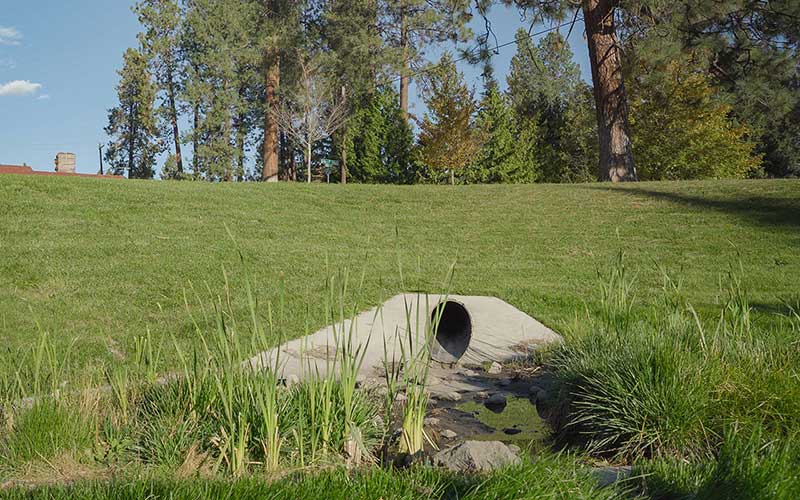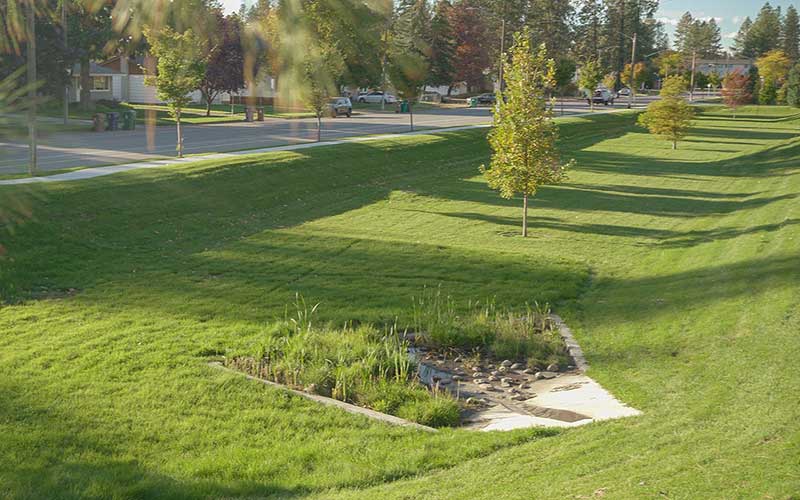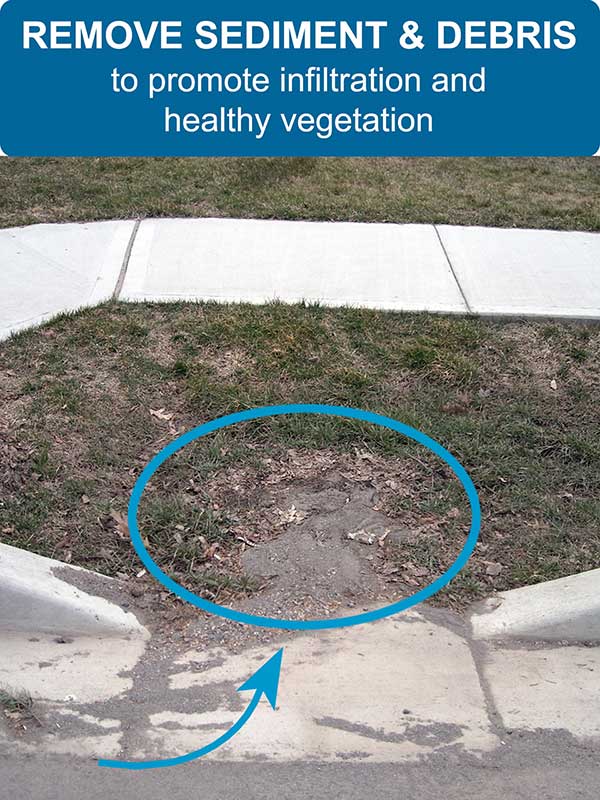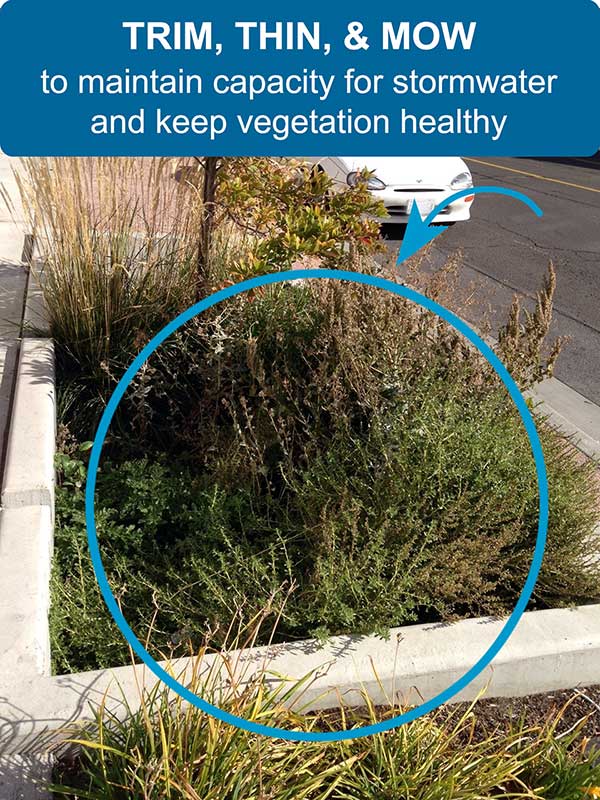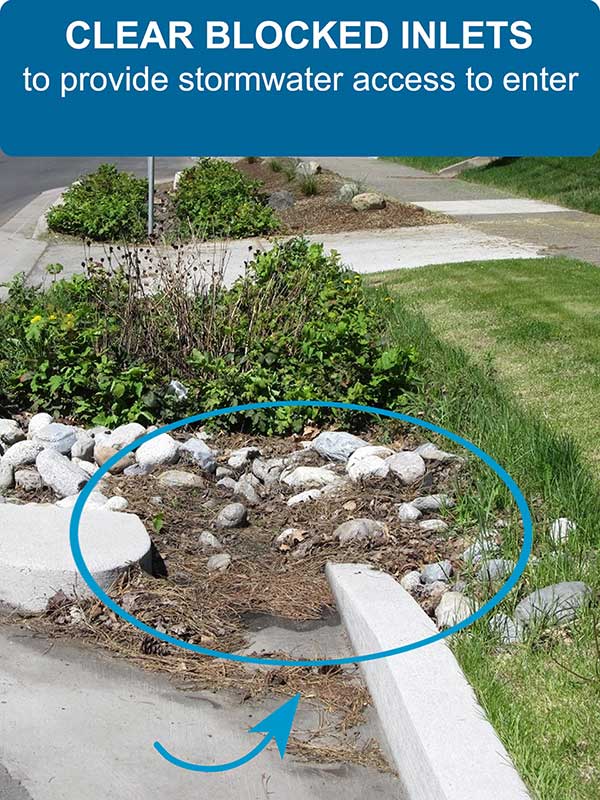Green Infrastructure
Stormwater Best Management Practices (BMPs) are utilized to manage runoff by capturing, cleaning, and sometimes infiltrating stormwater as near to its point of origin as possible, which is done in order to minimize the amount of pollution generated, as well as to maintain the natural downstream hydrology.
Development, or redevelopment, of land can be performed in ways that retain or create green spaces for the purpose of managing stormwater as close to its source as possible. This approach is called Low Impact Development (LID), and it uses natural tools, such as healthy vegetation, permeable ground surfaces, and good soils to treat and reduce stormwater flows to the conveyance systems and surface waters.
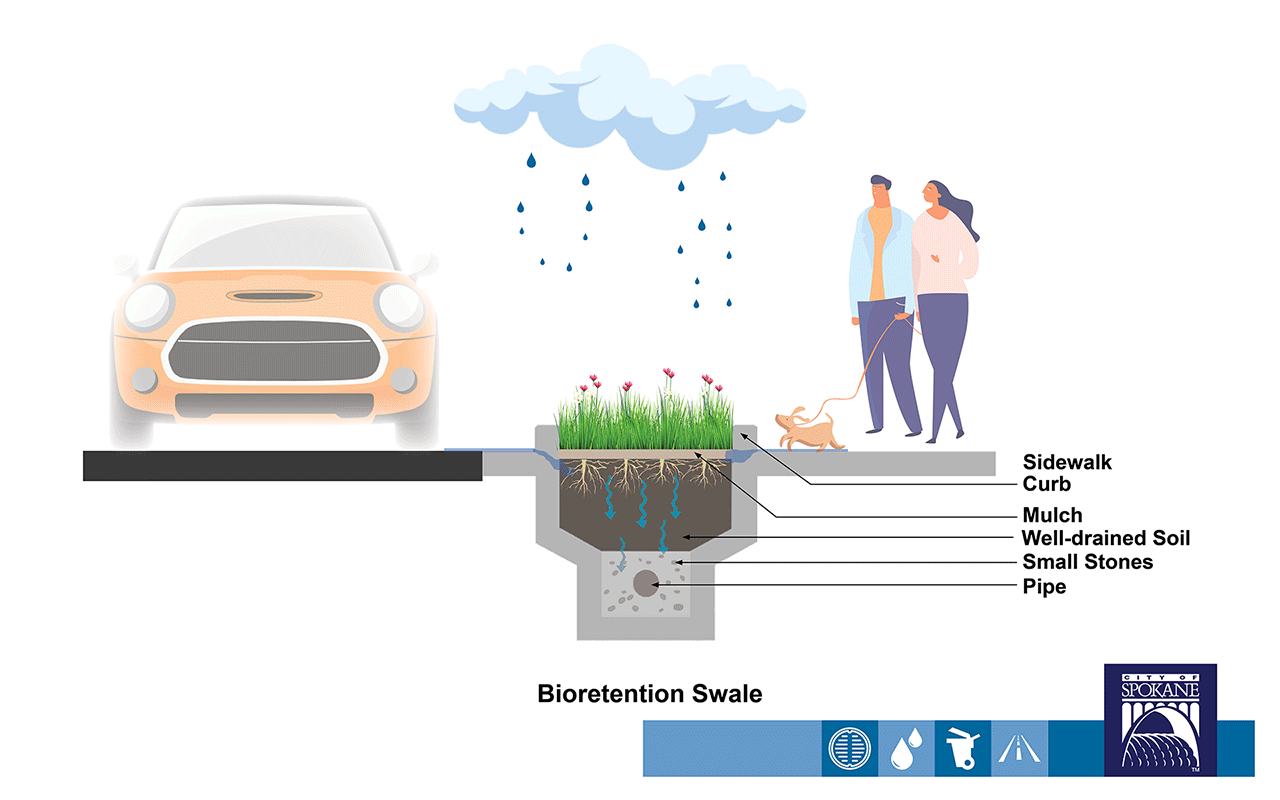
A stormwater management area that is developed using LID approaches and designed in accordance with the SRSM is considered Green Stormwater Infrastructure (GSI). GSI uses nature’s tools and natural processes within engineered systems to manage stormwater in ways that mimic natural hydrologic conditions. It is a cost-effective and resilient approach to managing stormwater with infrastructure that delivers environmental, social, and economic benefits, and results in healthier urban environments. In practical terms, GSI generally takes the form of landscaped green areas that receive stormwater runoff from streets and developed lots, and retain it until it soaks into the soil. The use of low-impact development techniques to create green stormwater infrastructure is one strategy to protect our river and aquifer and enhance the quality of life in our neighborhoods.
In the City of Spokane, GSI exists as a patchwork of green areas that are designed to manage stormwater by using healthy vegetation and soils in recessed areas to temporarily store, infiltrate, and ultimately treat runoff from rain events.
Local Examples
In Spokane, LID approaches are generally employed when planning and designing for stormwater treatment areas, where the BMPS are designed in accordance with the principles provided in the Spokane Regional Stormwater Manual (SRSM).
- Olmsted Brothers Green in Kendall Yards
- Sharp Avenue
- Hazels Creek
- Cochran
Maintenance
GSI areas used to manage stormwater must be maintained to ensure they are performing optimally by receiving and treating the stormwater runoff they were designed for. Responsibility for maintenance of green areas can be private or public, or a combination of both, dependent on where the area resides and the stormwater service it is providing. In order to meet the desired performance needs, green areas must be able to accept stormwater runoff, maintain healthy vegetation, and have enough capacity to temporarily store the stormwater until it soaks into the ground or discharged to an infiltration facility or receiving water body. Detailed information on the maintenance stormwater treatment areas is provided within the pamphlet Stormwater Treatment Areas Maintenance Information. Ultimately, in order to keep a green stormwater treatment area maintained, three basic tasks should be performed:
- Clear inlets
- Remove sediment and debris
- Keep vegetation healthy
Information on green area maintenance in the City of Spokane is provided in the Green Area Maintenance video below.
Learn more about low-impact development:
- Low Impact Development brochure, produced jointly by the City of Spokane and the Spokane Riverkeeper.
- City of Spokane low impact development ordinance that encourages the use of these techniques in private developments which was passed in August 2013.
- Eastern Washington Regional LID Guidance Manual, which provides best practices and other information.
Drought Tolerant Green Infrastructure
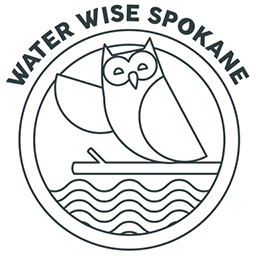
GSI doesn't always have to be "green." Drought-tolerant plants that can also survive intermittent wet periods may also be used to manage stormwater when installed following LID techniques and in accordance with the SRSM. When the appropriate drought tolerant plants are used for to satisfy the green stormwater infrastructure following the stormwater guidance manuals, the added benefit of water conservation is also realized.
For additional information on drought tolerant plants, and water conservation, check out the City of Spokane's Water Wise web page, and the Water Wise Spokane social media channels on Facebook and Instagram.
Working with The Lands Council
The City of Spokane and The Lands Council, a local nonprofit, have partnered to bring information to citizens about green stormwater management and the benefits of such facilities.
The City contracted with The Lands Council to reach out to neighborhood residents and businesses to talk about stormwater and the benefits of using green strategies, including "storm gardens." Outreach has occurred in both the Chief Garry Park and Shadle Park neighborhoods.
Additionally, in the Shadle Park neighborhood, The Lands Council and the City partnered on a pilot project to add a few storm gardens in the Shadle Park neighborhood. The Shadle Park Neighborhood was selected because it is part of a combined sewer area that's a good candidate for green technologies because of its smaller size and better, free-draining soils.
The Lands Council worked to identify property owners interested in having a garden installed to capture stormwater and filter it on site. The gardens include native plants and special soils, including a layer of biochar, a charcoal-like material that is a byproduct of biomass facilities.
This outreach is part of the City's work under its Integrated Clean Water Plan to manage stormwater and wastewater that impacts the Spokane River. The integrated plan prioritizes projects based on their positive environmental impact to the river. It includes projects to reduce untreated discharges to the river from both separated storm sewers and combined sanitary and stormwater sewers. One of the goals of the plan is to incorporate new cost-effective, green technologies for managing stormwater on site and reducing the amount of water flowing into pipes that discharge directly to the river.
For more information, visit The Lands Council.
Spokanescape
Removing turf grass is one of the most water conscious adjustments a homeowner can make to reduce their water usage and associated costs. A well-designed SpokaneScape will beautify your property, protect our natural resources and the environment; and will inevitably reduce yard maintenance. City of Spokane Water customers can earn up to a $500 credit towards their utility bill after removing lawn and replacing it with water wise plants and mulch. Learn more.
Related Links
- Stormwater Treatment Area Maintenance Information (PDF 2.3 MB)

